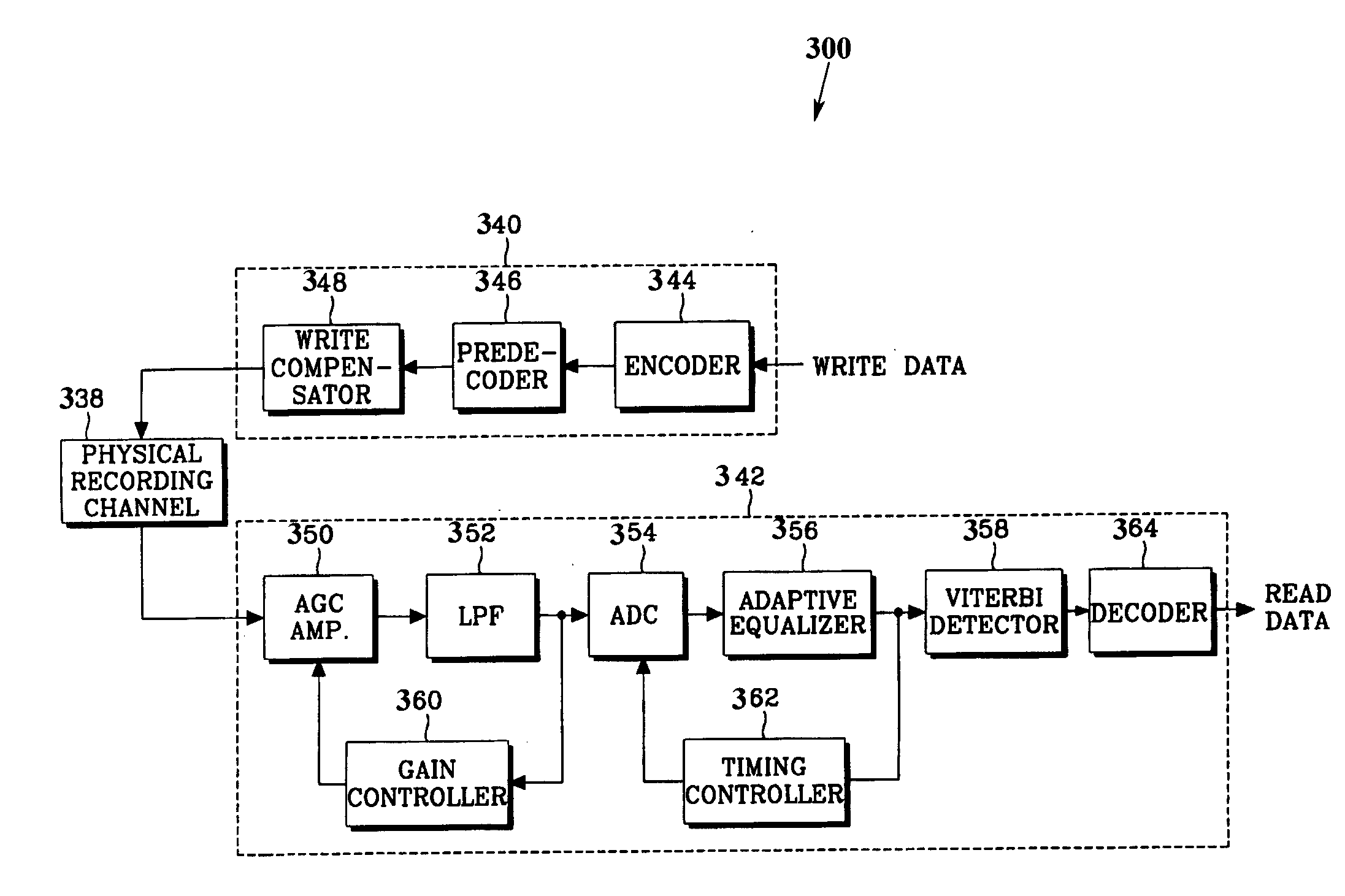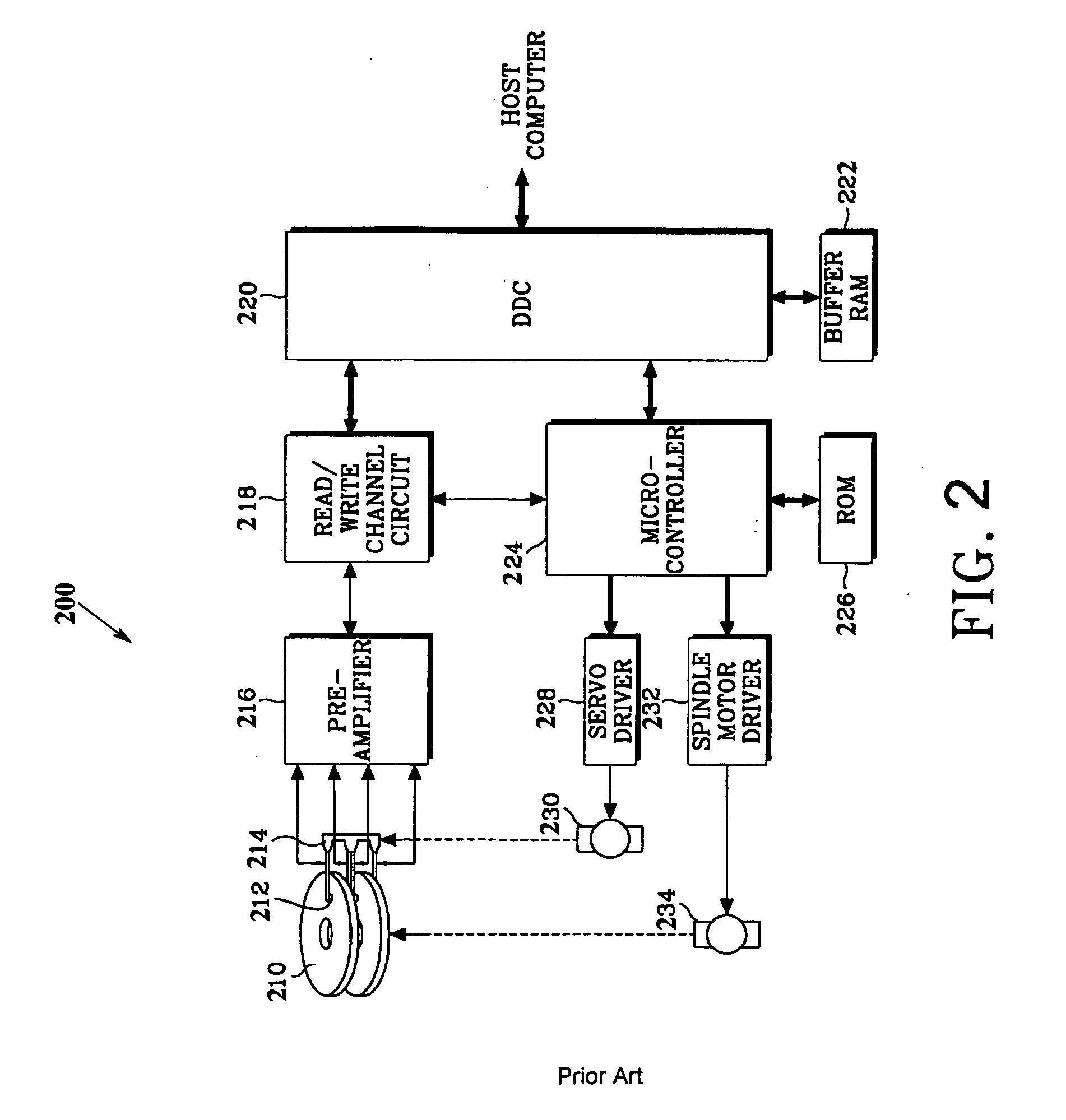Method and apparatus for data coding for high density recording channels exhibiting low frequency contents
a data coding and high-density recording technology, applied in the field of data channels, can solve the problems of low code rate efficiency, unsuitable, and ineffective regular error event correction, and achieve the effect of eliminating additional error events
- Summary
- Abstract
- Description
- Claims
- Application Information
AI Technical Summary
Benefits of technology
Problems solved by technology
Method used
Image
Examples
Embodiment Construction
[0073] In the following description of the embodiments, reference is made to the accompanying drawings that form a part hereof, and in which is shown by way of illustration the specific embodiments in which the invention may be practiced. It is to be understood that other embodiments may be utilized because structural changes may be made without departing from the scope of the present invention.
[0074] The present invention provides a method and apparatus for data coding for high-density recording channels exhibiting low frequency contents. The present invention provides codes that satisfy both Running Digital Sum (RDS) and Maximum Transition Run (MTR) properties to achieve high-density recording for recording channels exhibiting low frequency components such as perpendicular magnetic recording channel.
[0075]FIG. 1 illustrates a storage system 100 according to an embodiment of the present invention. In FIG. 1, a transducer 110 is under control of an actuator 120. The actuator 120 c...
PUM
 Login to View More
Login to View More Abstract
Description
Claims
Application Information
 Login to View More
Login to View More - R&D
- Intellectual Property
- Life Sciences
- Materials
- Tech Scout
- Unparalleled Data Quality
- Higher Quality Content
- 60% Fewer Hallucinations
Browse by: Latest US Patents, China's latest patents, Technical Efficacy Thesaurus, Application Domain, Technology Topic, Popular Technical Reports.
© 2025 PatSnap. All rights reserved.Legal|Privacy policy|Modern Slavery Act Transparency Statement|Sitemap|About US| Contact US: help@patsnap.com



